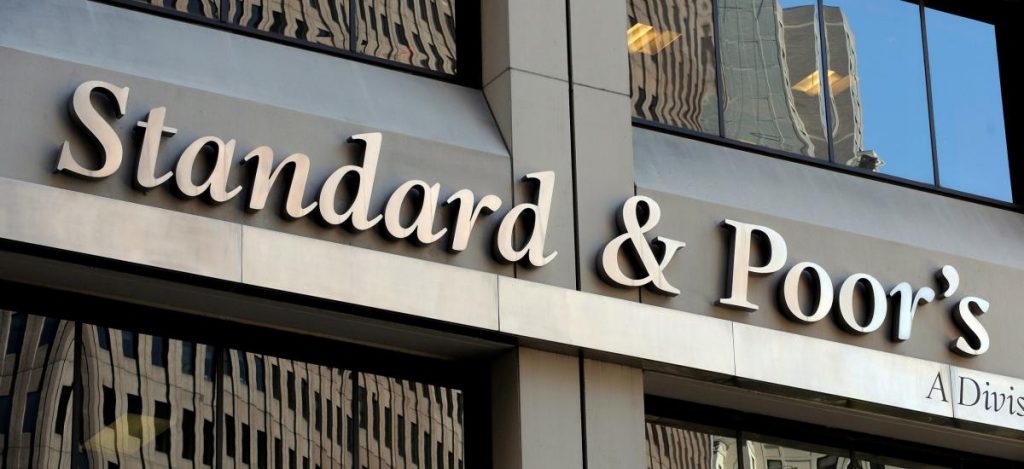
-p1 and -p2 side by side Both S&P and Moody’s have maintained the country’s long-term foreign currency issuer default rating at A- and A3 respectively.
BYLINE: In analysts’ view, Fitch’s rating downgrade is unlikely to be followed by other international ratings agencies such as Standard and Poor’sRatings Services (S&P) and Moody’s Investors Services (Moody’s) in the next few months.
This comes as post the Covid-19 pandemic, Malaysia’s fiscal authorities are likely to engage in a comprehensive fiscal consolidation strategy.
“Currently, based on our medium forecasts for gross domestic product (GDP growth), inflation, interest rates, and exchange rates, we view Malaysia’s general government debt trajectory as sustainable,” opined the team at RHB Investment Bank Bhd (RHB Research) in a note yesterday.
“While the 2019 general government debt/GDP ratio of 65.2 per cent is higher than the median of 59.2 per cent of Malaysia’s peers and is likely to rise in 2020 and potentially to some extent in 2021, the trajectory of debt sustainability remains intact.”
Looking at Fitch’s commentary, RHB Research disagreed with Fitch’s utilisation of “liquid assets and liquid liabilities” in its assessment of Malaysia’s external liquidity position since what is liquid and what is illiquid at different points of the business and market cycle are purely subjective in nature.
“The other metric Fitch focused on was domestic banks capital buffers and asset quality visibility, is strange in our view since the ongoing changes in banking sector policy aren’t specific to Malaysia but also prevalent in other countries in the region,” it continued.
“The usage of World Bank metrics to gauge governance in Malaysia’s policy making process and utilizing this as a major input in Fitch’s rating model we find is analytically improper.
“A more on the ground bottoms up approach to gauging the future prospects for governance and the impact on the policy making process in Malaysia is the correct methodology in our view.”
On Fitch’s comment on potential capital outflows due to the even risk f
rom Malaysia’s non-inclusion in a bond index and relative dependency on foreign financing, RHB Research found this to be “a bit odd”.
“In the current environment, non-inclusion in a bond index while disappointing doesn’t necessarily lead to capital flight since countries’ ability to meet index requirements due to extraneous circumstances is well understood by investors,” it explained.
Meanwhile, the team at Affin Hwang Investment Bank Bhd (AffinHwan
g Capital) recapped that both S&P and Moody’s have maintained the country’s long-term foreign currency issuer default rating at A- and A3 respectively.
However, S&P assigned Malaysia’s outlook long-term foreign currency issuer default rating from stable to negative on June 26, 2020.
“After Fitch’s downgraded Malaysia’s sovereign rating, the questi
on is whether S&P and Moody’s will follow suit to revise Malaysia’s actual ratings, which we believe hinges on government’s budgetary consolidation measures as well as current account surplus position going forward,” it said.
“Based on Malaysia’s macroeconomic fundamentals, we believe the persistent budget deficit since 1998 remains the weak link to the country’s sovereign credit rating pro
file.
“In light of the COVID-19 pandemic, it is understandable that the Government needs to implement large fiscal spending plan to stimulate economic growth.
“We also believe the projected Federal Government financial position for the upcoming 12th Malaysia Plan (12MP), covering 2021-2025 period, will likely be expansionary on the economy, especially through higher development expenditure (an allocation of RM69bn budgeted for 2021), which may put some downside risk to the medium term budget deficit target.
“However, we believe reduction in government spending should not come from the cut-back in gross development expenditure as it plays an important role to provide the necessary multiplier effect to generate domestic economic activities next year.”
The post S&P, Moody’s not likely to follow suit appeared first on Borneo Post Online.

